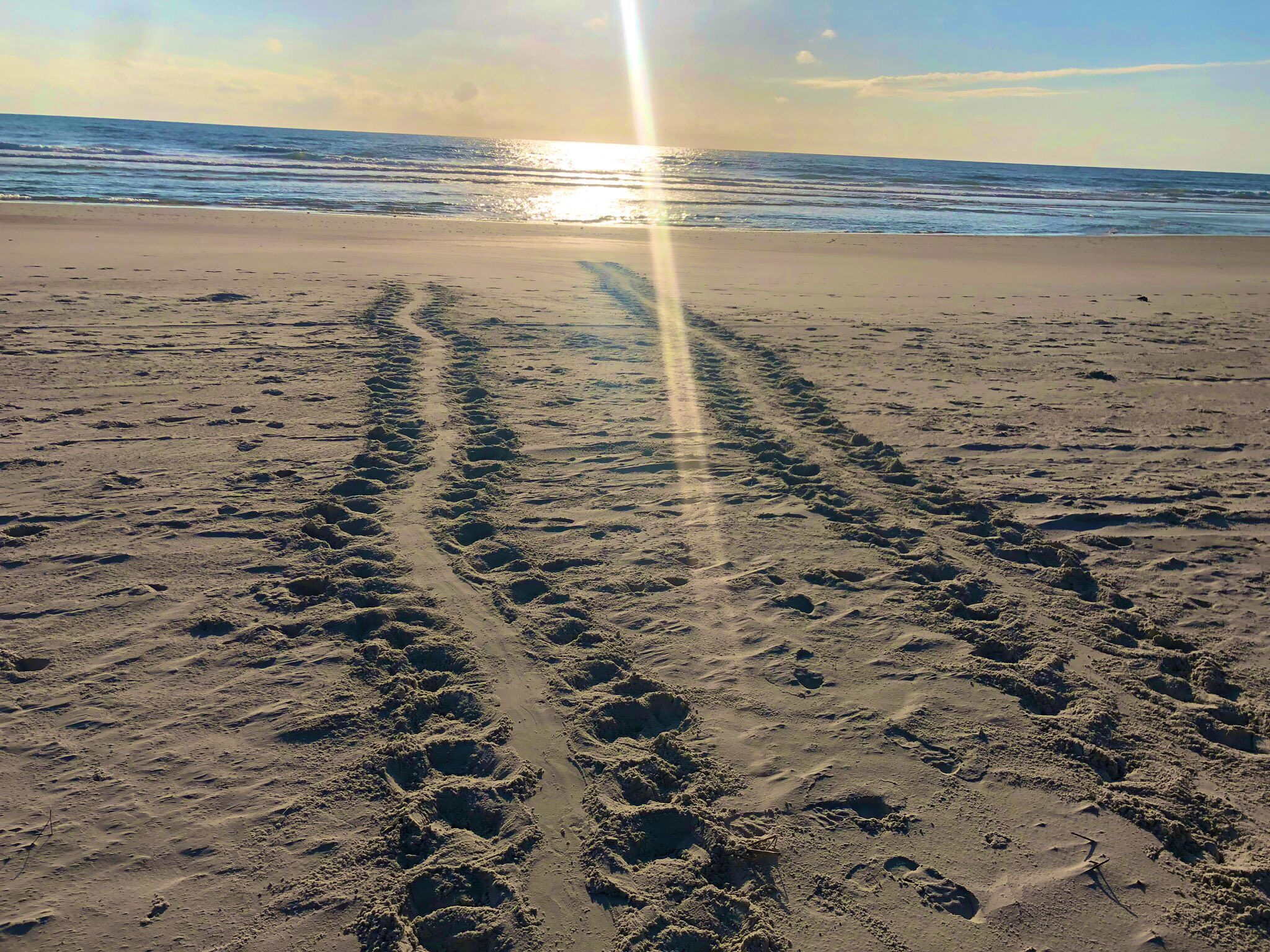
NPS Loggerheads can live between 47-57 years, and the females do not become fertile until about 25 years of age. A female may lay 3-4 clutches in a season and not lay again for up to three years. Eggs are highly preyed upon if the nest is discovered. Natural predators such as ghost crabs, racoons, and gray foxes can inflict significant damage on nesting sites. Non-native predators, including coyotes, dogs, and even human poachers cause further egg loss. Ecological vulnerability to climate change-related rising tides (wash overs) and severe weather events (wash outs) can also be an issue. Once hatched, baby turtles are prey to almost everything. Human interference in the form of light pollution can cause disorientation in baby turtles trying to follow reflected moon and starlight to the ocean. Sandcastles, holes, and tire tracks in the sand can trap or lead baby turtles away from the ocean as well. Please remember to leave the beach how you found it or better. Fill in all holes, flatten all castles, and rake out all ruts before departing. Not all hope is lost however. Loggerhead turtles have some wonderful and surprising adaptations from birth that allow them to survive. One question commonly asked is, “How do the baby turtles know where to go once they reach the water?” One theory is that loggerheads have a substance called magnetite in their brains. Magnetite is an iron compound that is magnetic, which may enable the turtles to orient to the earth's magnetic field, helping them to navigate the vast ocean. They are also very instinctive at birth. The little hatchlings burrow out of around two feet of sand at night, then crawl across long spans of beach toward natural light reflected off the water. Once in the water they allow the undertow to pull them out to sea, and once deep enough they swim for about 20 hours straight. When they reach the Sargassum Sea, they use floating seaweed to hide from predators and forage for food. The greatest threats to loggerheads are manmade. Drift nets and bottom trawling nets kill around 5,000 loggerheads per year as by-catch. By-catch is unintended catch that is disposed of as waste. New innovations in large scale fishing gear include turtle excluder devices that give turtles a change to escape the nets. Over 8,000,000 metric tons of plastic is dumped into the ocean every year. (Every year!!) All trash damages the environment; however, plastic is particularly harmful. Monofilament fishing line can wrap around turtle body parts, permanently damaging fins and shells. Plastic bags may look like jellyfish floating in the water to sea turtles and be mistakenly ingested. Broken down plastics (microplastics) have made their way into the tissues of many sea creatures due to their presence in microorganisms that form the basis of the food chain. Global warming effects are having concerning consequences for animals like sea turtles whose sex ratios are temperature dependent. Nests in areas experiencing extreme heat are producing predominantly females. A largescale dearth of males could have serious consequences for the species long term. For all these reasons, if we are mindful of our effect on the environment, especially in terms of waste disposal and energy consumption, humans can help be the heroes sea turtles need more than ever. |
Last updated: August 11, 2020
